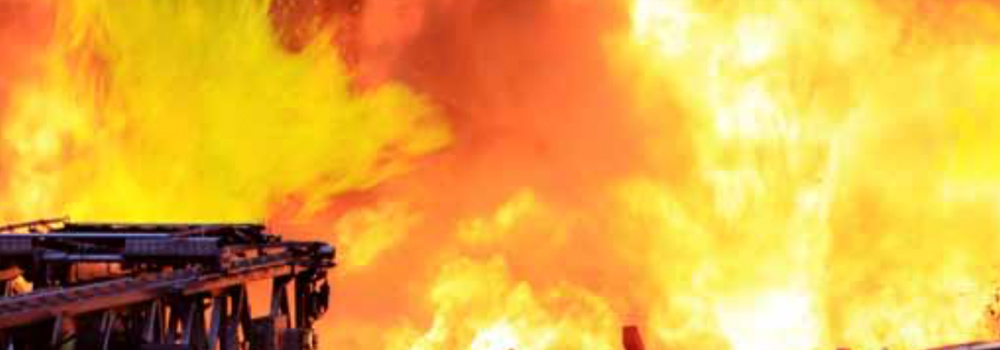
WHY YOU NEED IT
Fire at recycling sites
On average, a fire breaks out at a UK waste management site almost every day of the year. Between 2001 and 2012, the average number of fires in the UK was revealed to be 355 per year.
Usually, it’s not arson or human error that starts the fire. The most common cause of these blazes is spontaneous combustion.
Heat is generated within the stockpile and, if it cannot escape, builds steadily to levels where the material simply starts smouldering and then bursts into flames.
With the growth in recycling, and the use of recycled materials in power plants, stockpiling of material tends to be for longer periods and in greater quantities than had previously been the case. This in turn increases the risk of fire.
The frequency of fires and the damage and hazards they cause, on site and across the surrounding environment, has led the Environment Agency to tighten its fire prevention demands on the waste and recycling industry.
If you don’t put in place and use fire prevention measures, your site permit and insurance could be at risk.
New Environment Agency guidance
In 2016, the Environment Agency updated its guidance for Fire Prevention Plans which applies to operators who store any amount of combustible waste.
The measures are designed to meet three objectives:
- Minimise the likelihood of a fire happening
- Aim for a fire to be extinguished within four hours
- Minimise the spread of fire within the site to neighbouring sites
Its website states that the Environment Agency is likely to approve your Fire Prevention Plan if it includes all the measures in the guidance. It adds that you can discuss other fire prevention measures with the Environment Agency and you can propose alternative fire prevention measures if you can demonstrate that they will still meet the three objectives.
You can read the full requirements of the Environment Agency here. They include a requirement for rotation of stockpiles every three to six months and a reduction in the maximum height for wood stacks from 10 metres to 4 metres.
What this means is that anyone wishing to store waste in larger piles than those recommended in the guidance will need to demonstrate a higher level of monitoring and control.


